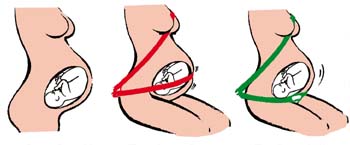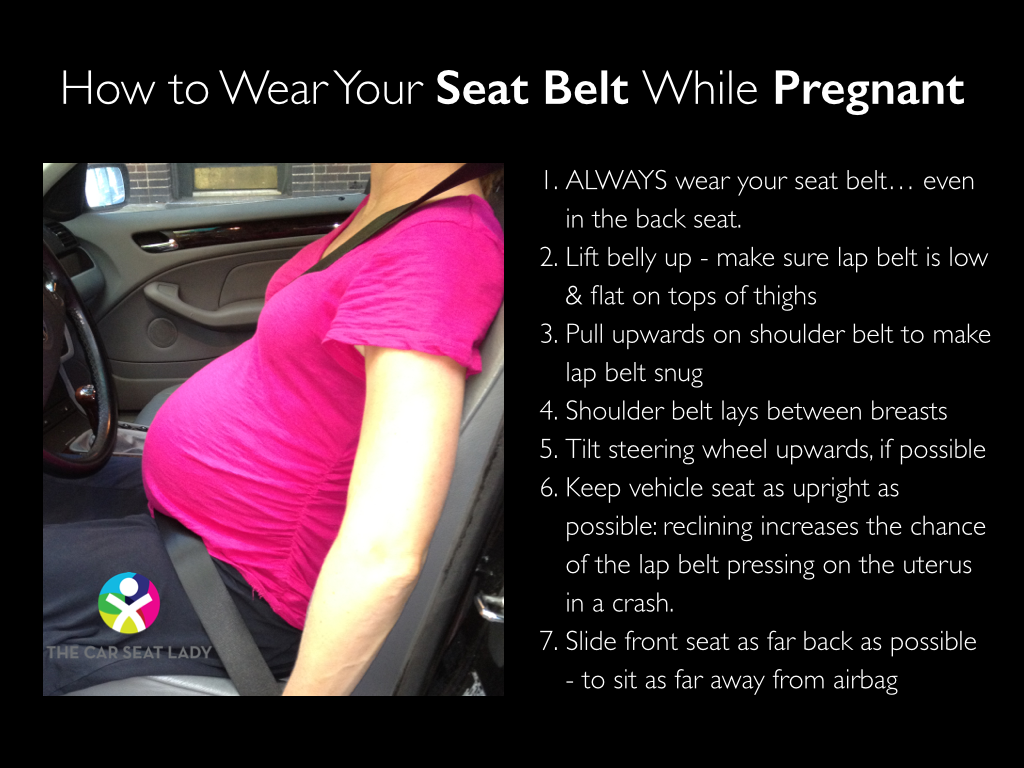Your seat belt is your baby’s first car seat. When worn properly, the seat belt will help keep you and your unborn child safe in a crash. Everyone – pregnant or not – should wear their seat belt in the same way.

Shoulder Belt: The shoulder belt should go across your chest and rest on your collarbone between your neck and shoulder. Putting the shoulder belt under your arm or behind your back is exceptionally dangerous as it takes away all protection for your head and chest AND makes the lap belt slide up into the belly during a crash.

Because the pregnant crash test dummy is not biofidelic enough to show what can happen to a REAL pregnant woman in a crash, using a seat belt positioner turns you and your baby into guinea pigs in an experiment to see if the positioner is safe or not.
While there is a pregnant crash dummy, it is not sophisticated enough to determine whether seat belt positioning devices for pregnant women could be harmful. Most of these positioning devices haven’t been tested with the pregnant dummy either.
With regard to positioners that try to change how the shoulder belt rests, it is important to note that real world evidence does not point to the shoulder belt being a problem. Kathleen Klinich, a leading researcher who published a 2008 study on pregnant women in crashes noted that “There’s nothing I know of suggesting that the shoulder belt is responsible for loading the pregnant abdomen; case reports I have seen indicate that if there is a problem, it is loading from the lap belt which is riding up too high over the abdomen.”
Real world crashes show that lap and shoulder belts are effective at reducing injury to mom & fetus without extra seat belt positioning devices. This 2008 study of pregnant women in crashes estimated that if proper belt use among pregnant women went from 80% to 100%, it would reduce the number of fetal deaths in car crashes by half. This study showed that the best way to protect the baby is by protecting the mom – and the best way to do that is for mom to wear a shoulder & lap belt properly. Moms who wore a shoulder & lap belt were 4.5 times more likely to have an acceptable fetal outcome in a crash than moms who didn’t wear a seat belt.
A lot of pregnant moms worry about the airbag. Don’t. Data from this study suggests that restraint by an airbag plus shoulder & lap belt leads to fetal outcomes that are as good as restraint by just a shoulder & lap belt; airbags do not appear to worsen fetal outcomes.
